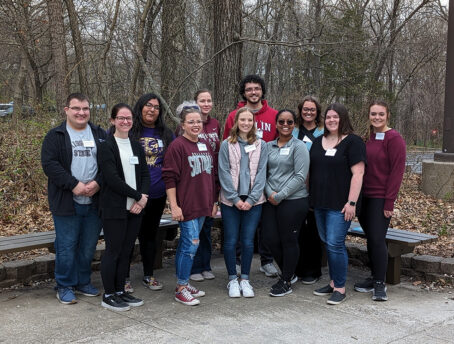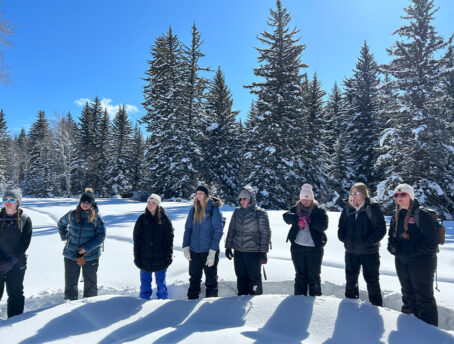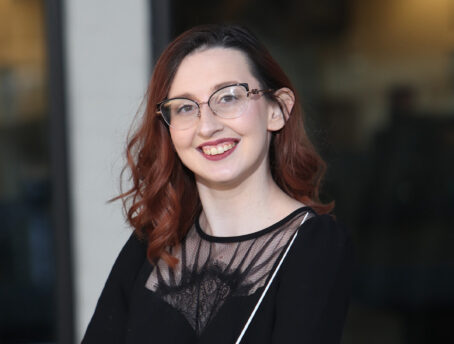Editor's Note: Sabrina Tackett is a National Board certified teacher who is employed as a middle school writing instructor by the Jenkins Independent School District. Besides serving as a Hope Street Group Kentucky State Teacher Fellow, she enjoys serving as the director of the Mountain Writing Project in Hazard. She is the middle school vice president of the Kentucky Council of Teachers of English, as well as the founder of the Kentucky Writing Project Online. This column originally appeared in Kentucky Teacher, a publication of the Kentucky Department of Education.
Opening Our Classrooms to Career Talk, by Sabrina Tackett
Teaching has a way of forcing you to quickly shift gears to adjust to students’ needs. Sometimes this shift happens automatically, but at other times, the shift isn’t smooth. Sometimes it is grinding. Manual transmission grinding.
With 15 years’ experience teaching writing, I usually can find gears without stalling the engine. But recently, what I thought was a flawlessly conceived lesson stalled.
I had adapted a writing activity from Dave Stuart’s blog, asking students to think about their future. Many students were able to complete the prompt independently, but one student had nearly insurmountable difficulty. I did not know this uncomfortable moment for my student would ignite a fierce teacher learning quest for me.
Brayden, a bright 8th-grader who normally completes quality work in record time, kept sitting, staring, pencil unmoving. Casting his eyes in my direction, he emitted a frustrated sigh.
Through the years, I have learned not to “rescue” students too early when I provide them with a prompt. Productive struggle is good, right? I typically ask them to think about the prompt for a minute or two, maybe do brainstorming, before working toward a cohesive piece of writing. We had exceeded the customary spin time by a couple minutes. Brayden needed a rescue.
Thinking I could quickly solve his problem before moving to a more challenged writer, I approached him and offered, “Writer’s block?” Ducking his head, he whispered, “I’ve got nothin’!” He explained he had no idea what he wanted to do in the future. After a series of probing questions, asking him to think about interests, about jobs in our community, about whether he wanted a vocational/military/college/career experience, he sat, still stymied, his increasing frustration mirroring my own.
He desperately wanted to start the assignment. I desperately wanted to help him. We were in the same vehicle, but had lost traction.
On the drive home that evening, I did what all teachers do – reflect. Why couldn’t Brayden complete the assignment? The prompt had been simple: “Ten years from now, what job will you be doing? What training and education will you need for this job?” I had assured students it was OK to have multiple ideas about the future. After all, for them the future was several years away.
Brayden’s friend, James, had completed the assignment quickly, detailing that he wanted to become a marine biologist. James could name the degrees he would need, he knew scholarships he could apply for – as well as minimum ACT score required – which schools offered the degrees and potential salary. If anything, James’ success in completing the assignment only made Brayden more aware of his deficits in thinking about his future.
The teacher in me analyzed these two, educationally similar students, both of whom had spent their entire educational experience in the same rural school district. Brayden is a student of poverty and is being raised in a single-parent home. His mother has been mostly unemployed for years. James comes from a middle class home with two college-educated parents who both work.
With heart-stabbing clarity, I began to understand Brayden’s problem in completing the assignment.
Brayden couldn’t conceive of a specific future because no one in his surroundings, including teachers, had encouraged him to explore career goals. He had limited ideas about future job possibilities because our community, small to begin with, has been decimated by the loss of hundreds of coal jobs. The job market here is almost nonexistent. We have one street, three restaurants, two dollar stores and one gas station. Even Wal-Mart is 20 minutes away.
My epiphany quickly subsumed by dismay, I wondered what could I do? An academically superior student, an almost high schooler, had no idea what he wanted to do after high school. Wow! If our purpose as teachers is to prepare students for unlimited futures, this student was in immediate jeopardy. My problem was more profound than completing a writing assignment.
A couple days later, still in rumination, I decided to spend a weekend with professional reading. I had been sucker-punched by an opportunity gap issue, but I was determined it would not be a knockout. I recalled reading about opportunity gaps in a post by Kentucky’s Education Commissioner Stephen Pruitt, in which he shared that, “challenging and interest-driven projects can narrow the opportunity gap.”
As Kentucky teachers, we are well-versed in achievement gaps, but what about opportunity gaps? They are not the same.
The deeper I researched, the more I learned that targeting an achievement gap does nothing to address the root cause of the problem – poverty. I also discovered in an article from “The Atlantic” that the percentage of 24-year-olds with bachelor’s degrees from the top half of income earners grew from 72 percent in 1970 to 77 percent in 2014. This trend suggests that growing up in a more affluent household matters more now in the likelihood of a child earning a college degree than it did almost 45 years ago.
Brayden’s difficulty and my learning added a critical new imperative to my role as an educator in a rural, impoverished district. My school is classified as 100 percent free and reduced lunch. Did these statistics mean three-quarters of my students wouldn’t complete higher education? My heart sank, but my resolve deepened. I developed a plan to help all my students better understand postsecondary options.
To make this plan actionable, my students prepared a five-slide presentation to share with classmates that included job title, education/training needed, potential schools they might attend or training they would need, degrees/certifications they would obtain, how long that would take, and cost of tuition and fees. In total, we used two weeks for research, presentations and conversations about careers.
While still teaching to standards, I broadened horizons and removed some barriers for my students. And, more importantly, the time spent resulted in Brayden narrowing his future career choices to radiology or diesel mechanic training.
What can you do to help your Brayden and similar students?
- Broaden your focus.
- Look at students through the critical lens of future possibilities, not just the lens of content mastery.
- Ask students to research future careers and potential colleges.
- Facilitate students to research careers by using results from students’ Individual Learning Plans.
- Help students explore what future education and training might be needed to make their dreams a reality.
- Share what you are learning from your students with your school guidance counselor and/or fellow teachers. Don’t be afraid of career talk.
- Facilitate students to discover their interests, passions and talents, so they can attune to future vocations with greater acuity.
Opportunity gap issues are prolific and complex. As teachers, we owe it to ourselves and our Braydens to deepen our understanding of opportunity gaps. With guidance, our students can fully realize the bright future they might first have dreamt up in our classrooms!
We encourage to share this piece or comment on Facebook: http://bit.ly/2guYre2
We also invite you to follow us on Twitter: https://twitter.com/Rural_Schools
You can contact Sabrina at: sabrina.tackett@jenkins.kyschools.us
Special thanks to Brad Clark, Director, Kentucky State Teacher Fellowship Program, and Jennifer Ginn, Editor, Kentucky Teacher.




